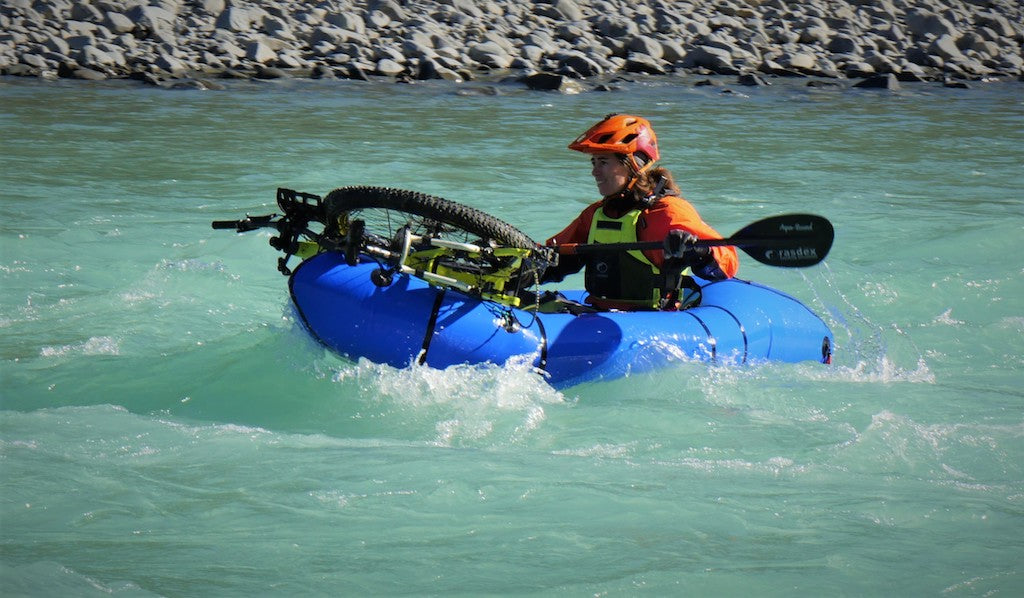This is Bikerafting - Tips & Video by Deane Parker
Share
To the uninitiated, bikerafting must be the weirdest thing! A tiny inflatable raft carrying a person and a blinged-out bike? Must be a bit wacko.
That’s what I thought of packrafting when I first heard of it: weird. That was only a couple of years ago, and even in that short time, it is becoming more popular and mainstream. Here in New Zealand where river exploration once waned, new sections are being paddled and forgotten rivers make for great multi-sport experiences with access by hiking and biking.
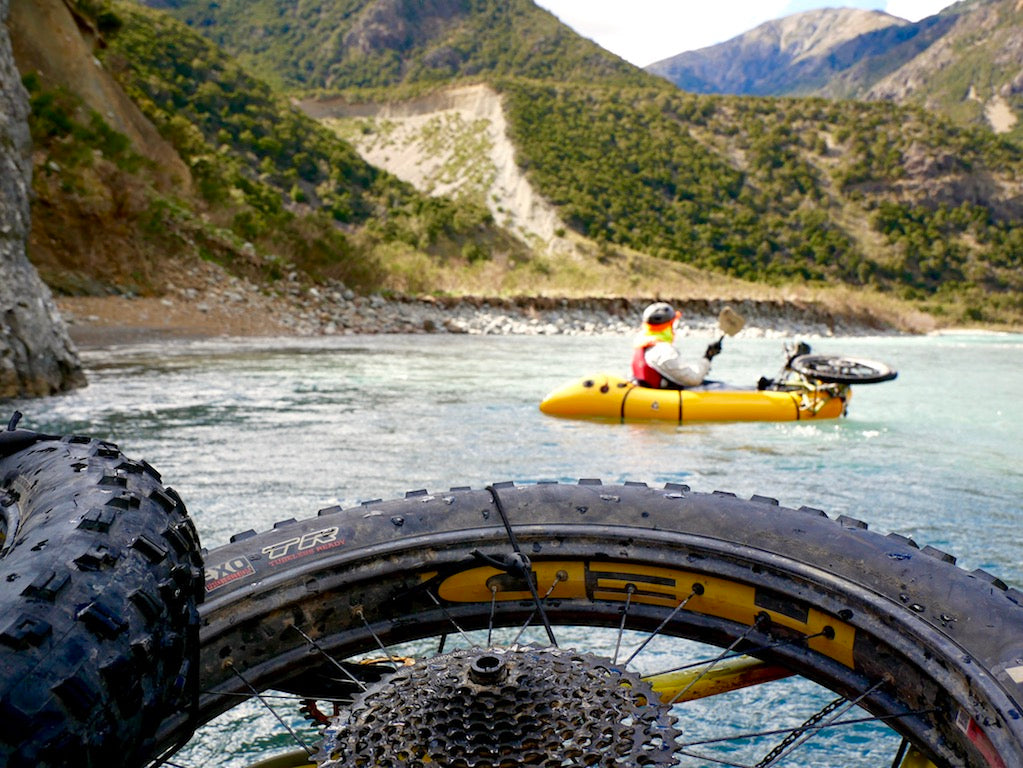
Packrafting has led to wholesale changes in the adventure racing scene. It’s a no-brainer for race organisers to include packrafting gear as part of the mandatory equipment required by teams, making race logistics simpler and reducing the amount of boats the race needs to supply. In a way, bikerafting is a bit like an adventure race, or more like an adventure challenge. Take a bike, a boat, and all the gear you need for multiple days and plot a route… just about anywhere.
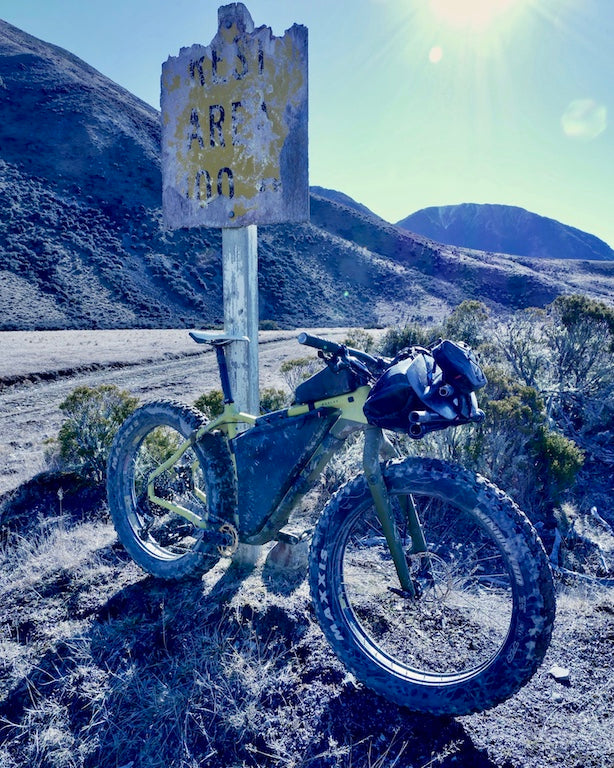
Part of the appeal, at least for me, is that I don’t have to stray far from the nest and family and farm commitments. Bikerafting makes me look at familiar country or terrain with a totally different perspective. Joining the dots between rivers and trails makes for an interesting navigational exercise.
How many times have those of you with some paddling experience ridden beside a waterway and been distracted by the thought of being in a boat and almost crashed? Story of my life! Bikerafting allows that mental and physical diversity that lets my middle-aged endurance keep going. Saddle sores and fatigued legs recover faster when in a cooler, less abrasive environment, and I still marvel at the yin and yang of the passive activity of drifting on a river, or lake as opposed to the aggressive energy required to tackle mixed terrain on a bike.
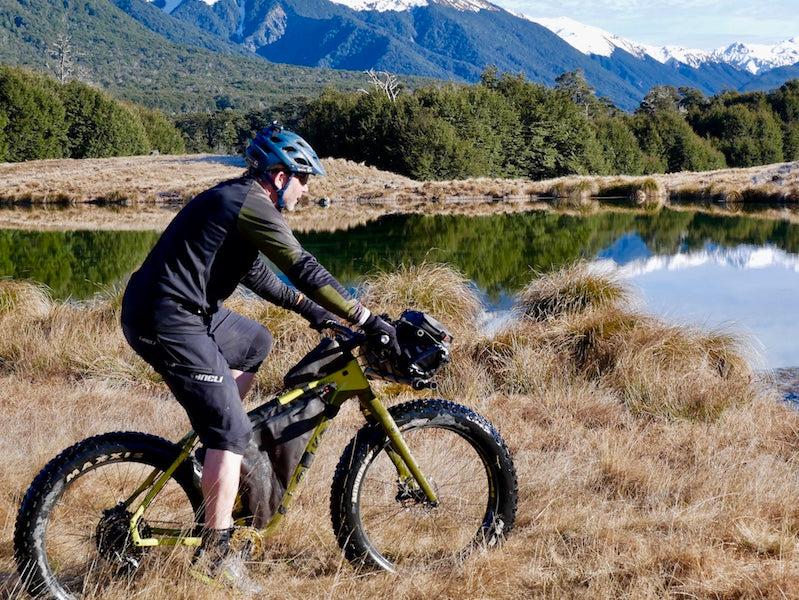
I understand that it’s daunting to less experienced boaters and bikers. I highly recommend trying something easy at first. Try a day trip, meaning less gear to lug, with a lake or grade 1 river. Especially when the biking section makes a loop, not needing to rely on a vehicle to return to where you started is the bikerafting advantage. It’s heaps of fun, and a totally unique way of traversing a landscape.
My five cents’ worth for successful bikerafting:
1. Experience
Ensure you are competent and comfortable paddling on the type of waterway you will bikeraft on without the bike on board first. If you have no experience, I highly recommend you find a packrafting-specific instructional course or group with more experienced paddlers you can learn from over the space of a few trips. Rivers, lakes, and oceans all have their own inherent risks; gaining the knowledge is easy, paddling experiences should be gradual and build confidence as you go.
2. Rigging the bike and boat
If you rented a packraft for your bikerafting trip or you haven’t rigged for bikerafting before, take the time to do a complete dry run of your pack and rig on the boat and vice versa on the bike in a relaxed fashion. Will the rolled boat and 3-4 piece split paddle be carried on the bike in a handlebar harness or in a backpack? Packrafts are slippery little suckers when rolled, so make sure your on-bike carrying system will stop it from jiggling round too much. Same with your paddle: ensure your system is secure and you couldn’t lose a piece of it when riding.
There are multiple ways to strap the bike on: some use Voile-type straps, some use short cam straps. I prefer the lightest most minimalist option. I’m not exactly sure what they’re called, but they consist of a 4-5mm bungee cord and a plastic cam buckle. I use four and ensure that each grabs some frame and wheel before fastening. It’s important to rig the bike as far forward as necessary so as not to impede your paddling range of motion.
What direction you orient the bike is also up to personal preference and can be trialled during dry runs. Because I’m taller (around 6’) and ride a large bike generally paddle a white-water-specific large packraft, I need to separate my handlebars and stem so I can tuck the handlebars into the rig so they don’t stick out to where my paddle stroke starts. My teammate Rose is a lot shorter and rides a small bike and medium boat, so doesn’t have the same problem. There are models of packraft that have been designed to carry a bike or moose on the bow – these boats tend to be longer and more suitable for flat or slow-moving water and easy rivers.
Once on the water, be prepared to pull over and readjust the load before you truly get going and start pulling in the miles. Your paddle stroke will appreciate it. Transforming from a biker to a packrafter and back is a time-consuming business, so give yourself adequate time for rigging.
3. Equipment
Bikerafting trips, even just for the day, need expedition amounts of equipment. Set everything out before packing so you can check it over, otherwise you’ll be ferreting around in your well-stuffed seat bag when you can’t remember if you put your head torch in. The best bikepacking gear systems are a harness with a separate dry bag, as this saves time rigging/de-rigging because the harness can be left on the bike on the packraft. Also, the dry bag can preferably be chucked inside the pontoon if you have a dry zip/cargo fly for storing gear internally. If not, be prepared to be uncomfortable with gear stuffed around you in the cockpit.
If you’re using an internal dry zip for gear storage, think carefully about whether you have everything you need for the river trip before inflation. On white water rivers this means lugging a small dry bag for snacks, warm clothes, boat repair kit, first aid, and electronics, including satellite tracker or PLB.
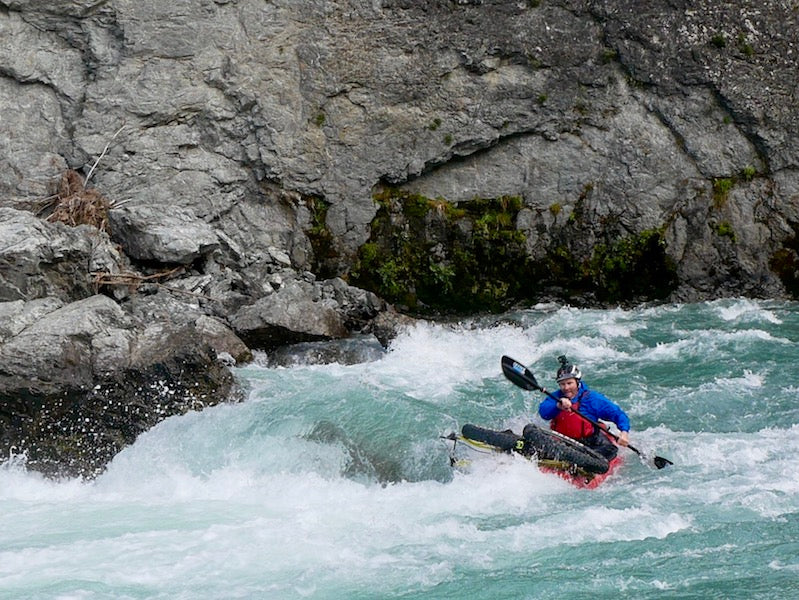
Always use a personal flotation device (PFD). On flat water, lakes, tidal estuaries, etc., an inflatable PFD is suitable. On swiftly moving rivers, an approved closed cell foam model is a necessity. It’s bulky to carry, either strapped to your backpack or alternatively on the top of the handlebar load. Look for lightweight freestyle kayak models that fold flat, fit well when paddling, and have easy access pockets for lip balm, tether strap for towing weaker paddlers or recovering equipment from a yard sale, and maybe your PLB. The model I use also has a pouch on the back for my throw bag, which I prefer, meaning in the case of a rescue I don’t have to spend extra time getting it out of my boat.
Extra thermal and waterproof gear deserves serious consideration in cold climates. I carry a complete set of gear I know is going to get wet. The weather, water temperature, and type of waterway will determine what layers you’ll need. I prefer a pair of lightweight (1.5mm) neoprene long pants and a lightweight paddle/splash jacket, merino/fleece layers on top, remembering most of my bikerafting is on rivers. If you’re a cold person, consider a full wetsuit or drysuit on rivers. A good tip is a pair of neoprene socks inside your riding shoes. On the flip side, in warmer climes, sun protection will be as equally important.
Wrap Up
Bikerafting could be the solution to a route you’ve dreamt of that’s cut off by a river or lake, or maybe it could be a major expedition down a remote coastline. Whatever it is to you, bikerafting allows more exploration, access, and ability to move through backcountry self-sufficiently all while enjoying the diverse landscapes of track and torrent or bodies of water. Start small, build up, and don’t be put off packrafts by any negative experiences you’ve had in kayaks or canoes. Packrafts are highly technical crafts that are super stable, manoeuvrable, and durable – the perfect tool for the part time paddler.
Video
A short film shot on the Waimakariri River in Canterbury. Learn a few tips about how to carry your bling bike on a tiny inflatable raft on a turbulent river.
Follow Deane Parker on Instagram (@deaneparkernz) and Facebook (@deane.parker.nz.adventure) for more bikerafting and outdoor adventures!
Check out the Caribou, a packraft Alpacka specifically designed for bikerafting and our bikepacking section!

